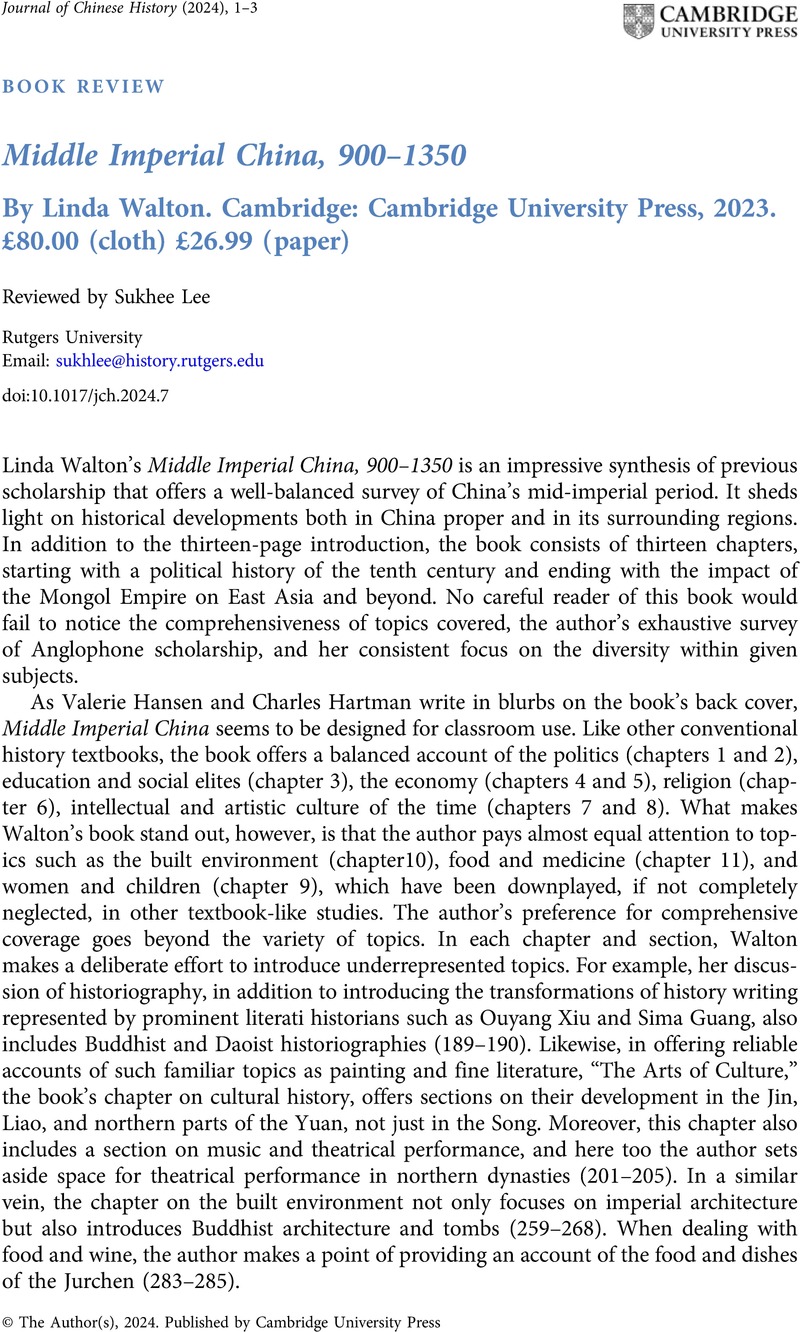No CrossRef data available.
Published online by Cambridge University Press: 13 May 2024

1 One notable omission from the bibliography is Jacques Gernet's classic study of Song urban life, Daily Life in China on the Eve of the Mongol Invasion 1250–1276 (Stanford: Stanford University Press, 1980)Google Scholar.
2 The only non-English study I found in the bibliography is Pierre Marsone's La steppe et l'empire: La formation de la dynastie Khitan (Liao) IVe–Xe siècle (Paris : les Belles lettres, 2011)Google Scholar.
3 See, for example, Yoshiyuki, Sudō, Sōdai keizaishi kenkyū 宋代経済史研究 (Tokyo: Tokyo daigaku shuppankai, 1962)Google Scholar; Setsuko, Yanagida, Sō Gen shakai keizaishi kenkyū 宋元社会経済史研究 (Tokyo: Sōbunsha, 1995);Google Scholar Xia, Qi, Songdai jingjishi 宋代经济史, 2 vols. (Shanghai: Shanghai renmin chubanshe, 1987–1988)Google Scholar; Zengyu, Wang, Songchao jieji jigou 宋朝阶级结构 (Shijiazhuang: Hebei jiaoyu chubanshe, 1996)Google Scholar; and Yoshirō, Takahashi, Sōdai Chūgoku no hōsei to shakai 宋代中国の法制と社会 (Tokyo: Kyūko shoin, 2002)Google Scholar.